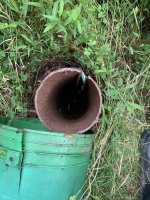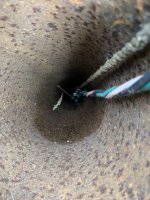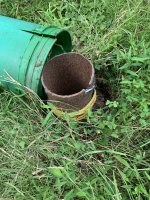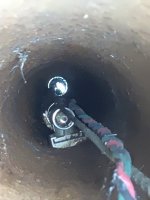Joseph Skoler
Member
I just installed did the install shown on the attached pic (nope, not a pro at all) -- had extremely little space available.
The well line comes in on the left, goes through a check valve (with schrader port on it, which I believe allows air in so the water can drain back down into the well -- right?), then into the CSV and pressure tank with well pump pressure switch, then through filter, then into a multiport tee (house cold water, water heater, hose spigot.
What I forgot to plan for is being able to drain the system for winterizing (or if power goes out for an extended period during freezing temp).
I'd sure appreciate some advice on the best way to make this reliably drainable (and anything else that is not correct).
Thank you,
Joe

The well line comes in on the left, goes through a check valve (with schrader port on it, which I believe allows air in so the water can drain back down into the well -- right?), then into the CSV and pressure tank with well pump pressure switch, then through filter, then into a multiport tee (house cold water, water heater, hose spigot.
What I forgot to plan for is being able to drain the system for winterizing (or if power goes out for an extended period during freezing temp).
I'd sure appreciate some advice on the best way to make this reliably drainable (and anything else that is not correct).
Thank you,
Joe




